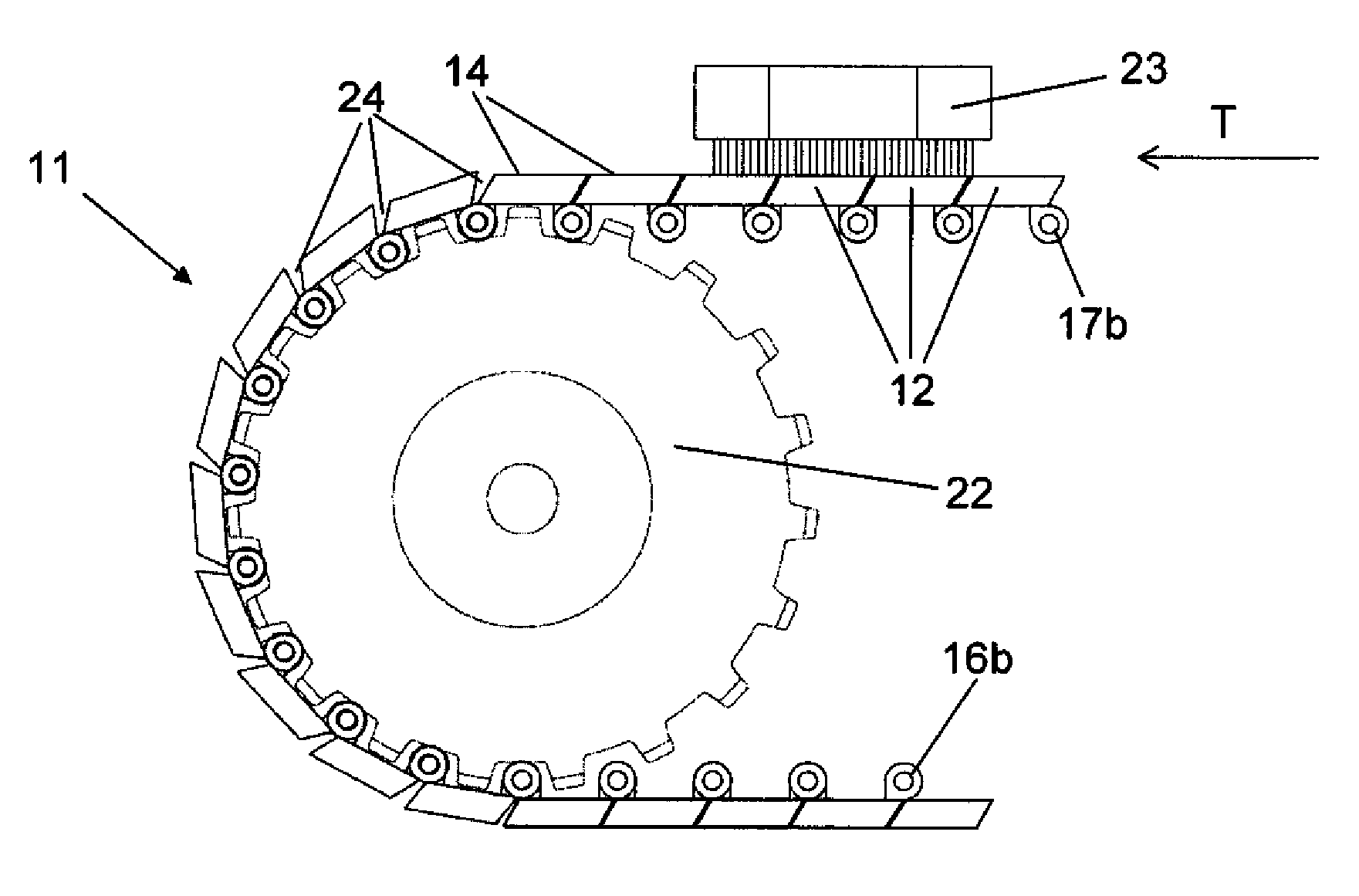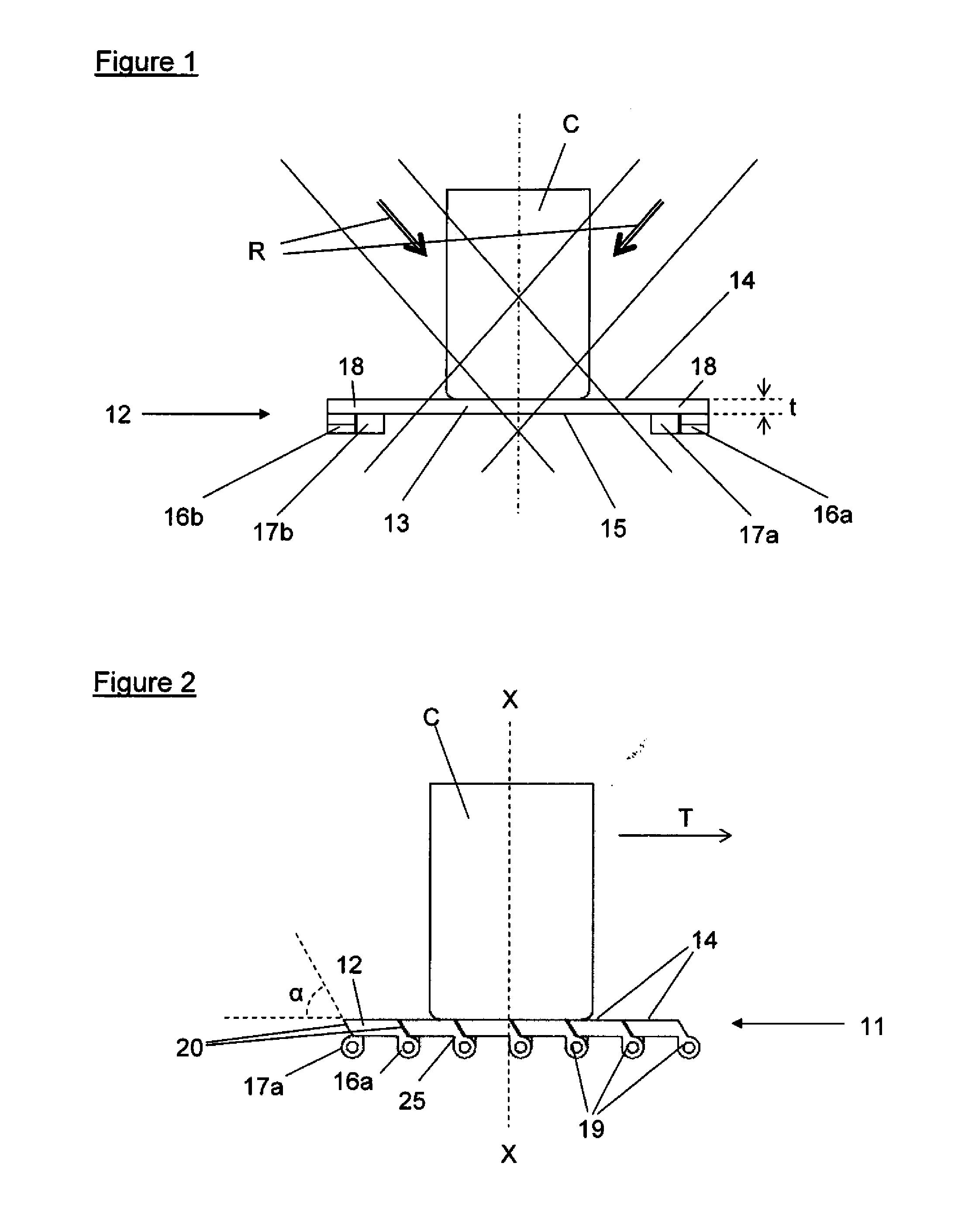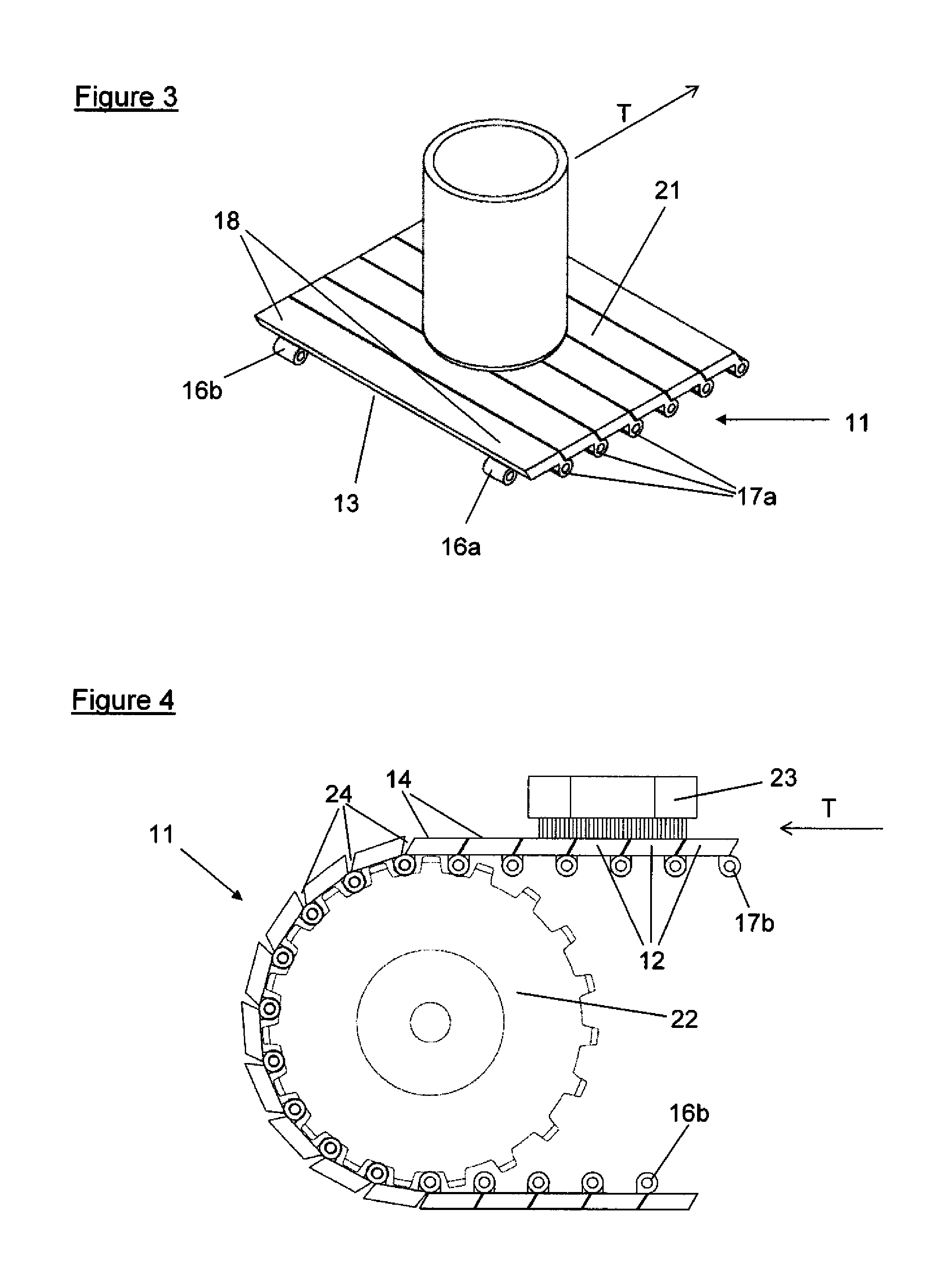Conveyor chain for a radiographic inspection system and radiographic inspection system
a radiographic inspection system and conveyor chain technology, applied in the direction of conveyors, measuring devices, instruments, etc., can solve the problems of conveyor chains unsuitable for radiographic inspection systems, easy damage and rapid wear, and the use of customary chain conveyors with plastic chain links is problematic in radiographic inspection systems
- Summary
- Abstract
- Description
- Claims
- Application Information
AI Technical Summary
Benefits of technology
Problems solved by technology
Method used
Image
Examples
Embodiment Construction
)
[0029]An exemplary embodiment of a conveyor chain 11 is shown in four different views in FIGS. 1 to 4. Viewed in the direction of movement of the conveyor chain, FIG. 1 schematically represents a conveyor chain segment 12 with a container C at the moment when the container C passes through the beams of a scanning radiation R of a radiographic inspection system (wherein the latter is not shown in the drawing). In this exemplary embodiment, the conveyor chain segment 12 has a flat topside 14 forming part of the transport surface 21 (see FIG. 3) of the conveyor chain 11. The mid-section 13 of the conveyor chain segment 12, which is traversed by the scanning radiation R, is of a substantially uniform thickness t. Hinge bearings are arranged on the underside 15 of the conveyor chain segment 12 in the outside border areas 18 that are not traversed by the scanning radiation R. In this embodiment, the part of the underside15 that covers the mid-section 13 is flat and parallel to the topsid...
PUM
 Login to View More
Login to View More Abstract
Description
Claims
Application Information
 Login to View More
Login to View More - R&D
- Intellectual Property
- Life Sciences
- Materials
- Tech Scout
- Unparalleled Data Quality
- Higher Quality Content
- 60% Fewer Hallucinations
Browse by: Latest US Patents, China's latest patents, Technical Efficacy Thesaurus, Application Domain, Technology Topic, Popular Technical Reports.
© 2025 PatSnap. All rights reserved.Legal|Privacy policy|Modern Slavery Act Transparency Statement|Sitemap|About US| Contact US: help@patsnap.com



